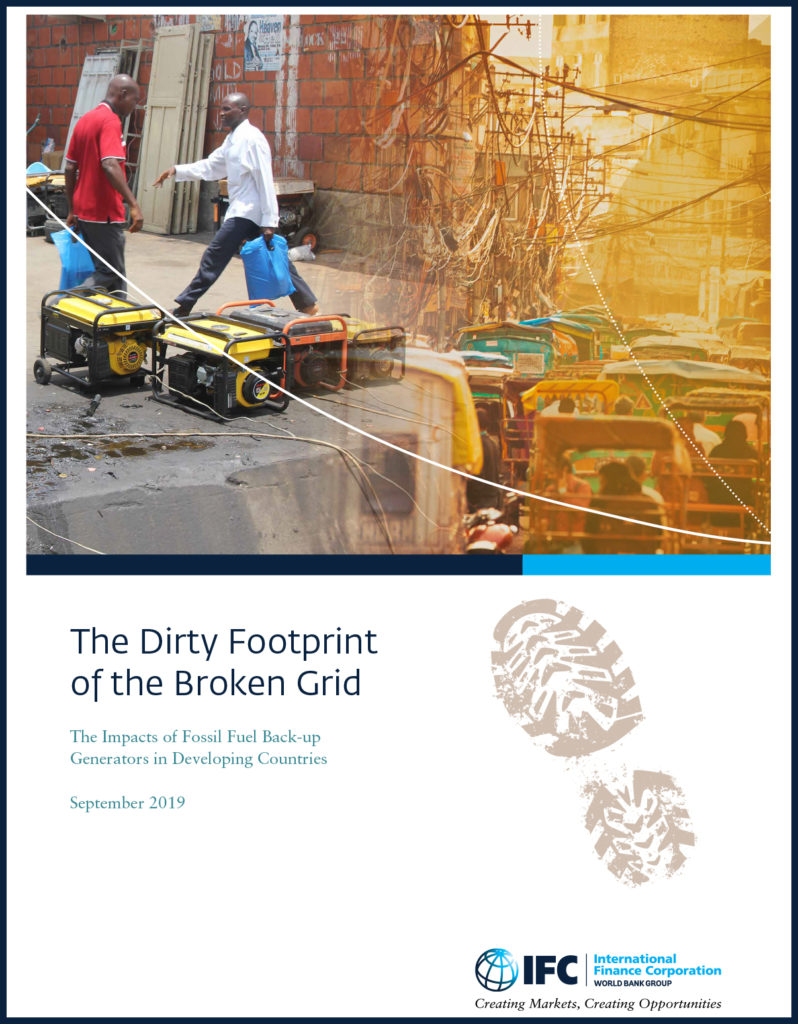
Worldwide, it is estimated that 1-2 billion people rely on unstable electricity grids. Power outages in each of these households and businesses can total hundreds to thousands of hours each year. Many rely on diesel or gasoline backup generators (BUGS) during these blackouts — or to provide electricity where grid connections are unavailable or unaffordable.
BUGS are used in homes, businesses, and for industrial purposes, in both off-grid and unstable on-grid environments. While generators do provide energy access, this comes with a considerable welfare cost. Generators emit air pollutants that harm health and the environment, contribute to sound pollution, and can be a significant cost burden.
Clean, renewable energy generation such as solar could replace BUGS in many environments. To determine the benefits of making these transitions, we first need to obtain a baseline for current BUGS use.
Major project elements
In partnership with the International Finance Corporation (IFC), a sister organization of the World Bank and member of the World Bank Group, we recently developed a modeling framework to assess the characteristics and impacts of generator fleet operation. We then applied the best available data for each country to estimate: the number and types of generators used; their operational time and fuel consumption; financial cost of operation; and pollutant emissions. Our study included data from 167 developing countries — excluding China, this represents over 95% of the population currently living in low- and middle-income countries.

This August, we completed the first global report that describes the status of BUGS use in economically developing countries. Key findings include:
- In developing countries, generators serve 20-30 million unique sites and have the potential to produce the power equivalent of 700-1,000 coal fired power stations. In some countries, backup generators provide more electrical capacity than the national power grid itself.
- In these countries, annual spending on generator fuel is in excess of $40 billion. In much of sub-Saharan Africa, there is more spending on generator fuel than on the maintenance and management of the national grid.
- Generators are a significant source of dangerous pollution, including sulfur dioxide, nitrous oxide, and carbon dioxide. While these chemicals are also released by cars, trucks, and motorcycles, generators are usually operated extremely close to homes, businesses, and in crowded commercial districts. (See video below)
- Each year, BUGS emit a total of 1500 kilotons of nitrogen oxides (NOx) across the countries studied. In sub-Saharan Africa, generators account for 15% of total NOx emissions — equivalent to 35% of the NOx emitted from the transportation sector.
In collaboration with the International Institute of Applied System Analysis (IIASA), our results have been used to update an emission inventory which provides critical input to climate and air quality models. This integration allows our results to be benchmarked against other energy activities, which will assist governments and development agencies in prioritizing regional and national climate mitigation and public health efforts.
Publications
- The Dirty Footprint of the Broken Grid: The Impacts of Fossil Fuel Back-up Generators in Developing Countries (September 2019)
Partners
This work has been funded by the International Finance Corporation (IFC), with support from the IKEA Foundation, and the Dutch and Italian governments. Collaborators at the International Institute of Applied Systems Analysis (IIASA) worked closely with us on this report, particularly around sections related to pollutant emissions from BUGS.













